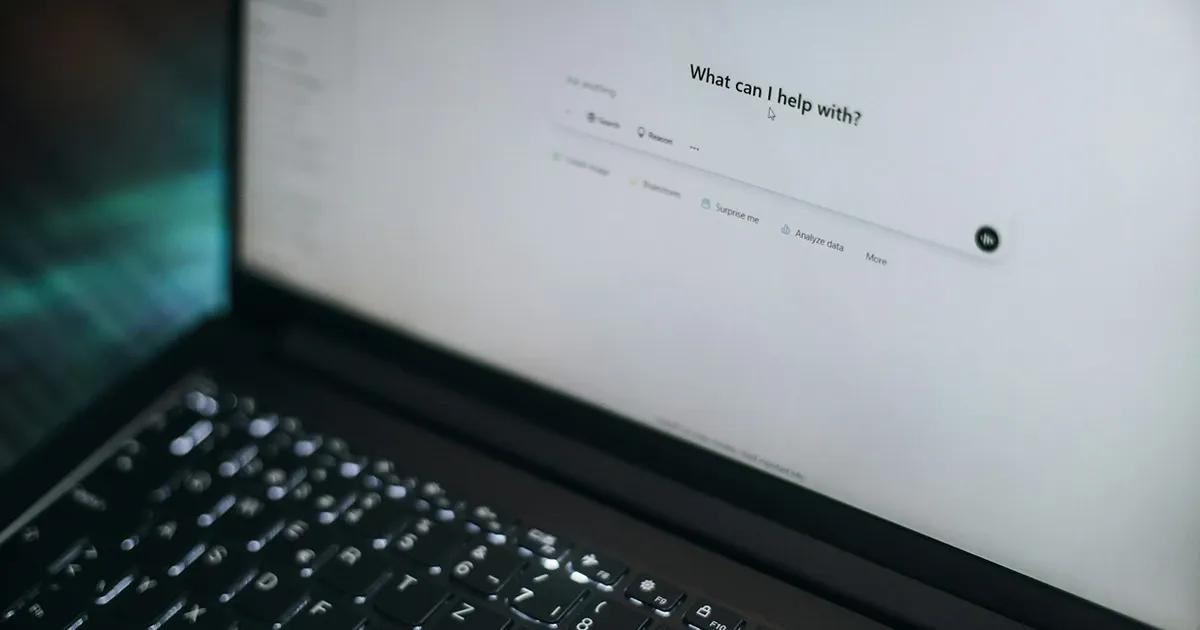Cryptocurrencies, or simply crypto, and decentralized applications have gained significant popularity in recent years, as they offer a range of benefits such as immutability, transparency and enhanced security. They are free from the control and interference of a single authority and additionally have higher user privacy as they can provide a certain level of anonymity. By the end of 2023, there were 575 million crypto users worldwide and the total number of users is only estimated to increase in the coming years.
In this blog article we will focus on cryptocurrency test networks, also known as testnets, which have an important role in blockchain testing and development. They serve as experimental playgrounds for developers, providing a risk-free environment for testing and fine-tuning applications before deploying them on the mainnet.
As this topic contains a lot of terms that might be unfamiliar to some readers, you can find a glossary at the bottom of the article.
What are testnets?
A testnet is an instance of a blockchain network that is used during the development and testing stage of decentralized applications (DApps), smart contracts or new cryptocurrencies before they are deployed on the mainnet (production network). It is used for testing and experimenting without risking losing real money or impacting the mainnet. Testnets use testnet coins that have no real-world value and can be freely obtained from faucets.
Advantages of using testnets

Realistic testing environment
Testnets aim to replicate the real-world conditions of the mainnet but without the risk of losing funds or impacting real users. Simulating the real conditions of the mainnet allows software testers to test how applications will perform in realistic scenarios, including assessing the scalability of a blockchain network, as well as testing security and overall functionality.
Cost efficiency
In testnets a separate currency—called testnet coins or tokens—is used. For example, regardless of the market price of the mainnet Bitcoin, the testnet Bitcoin should always be free and available (though usually with a set daily limit). This allows software testers to identify bugs on the testnet without any costs, as testing on the mainnet using real cryptocurrency would be costly.
Security of real users is not compromised
Transactions involving test tokens are isolated and don't impact the mainnet in any way because testnets operate independently from the mainnet. Issues discovered while testing in the testnet can be fixed before the application is released in the production environment. This allows developers to experiment with and test the feasibility and functionality of new features that may not be available on the mainnet in a risk-free setting.
Faster block times
Testnets usually have faster block times compared to an active mainnet blockchain, and because of it, transactions are confirmed quicker and transaction times are faster, which in turn makes testing them faster.
Easy to get community involved in testing projects
Using testnets makes it easy to get additional people involved in testing projects, which is especially important for bigger projects. In some projects, the community might be invited to test certain features in exchange for a token reward. Many crypto projects are inviting community members to test products on a testnet and in exchange get free tokens or coins. That usually happens using incentivized testnets where participants complete tasks, such as checking system performance and reliability, and identifying bugs to get rewards. For example, in late 2022, the Aptos incentivized testnet gave up to 300 APT tokens to selected users who performed tasks like NFT minting and node testing on their testnet as a reward.
Easier debugging
The need for detailed analysis and monitoring is crucial on both testnets and mainnets so most debugging and monitoring tools are designed to be used in both environments. However, the nature and use of these tools can vary significantly between the two due to differences in risk, cost and development phases. Developers can deploy and test smart contracts on testnets more frequently without worrying about gas costs, which would be less feasible on mainnets due to the higher cost associated with deploying contracts and executing transactions.
Disadvantages of using testnets

They are intended to be temporary
Testnets are intended to get deprecated over time in favor of newer test networks. The main reasons for deprecation are usually technological advancements which include new features, performance enhancements and security improvements. For example, the Ethereum Goerli testnet, which is the largest public Ethereum testnet, is deprecated as of January 2024. Sepolia is a newer Ethereum testnet, launched in late 2021, that has several improvements, like shorter block times and faster transaction confirmation times than other testnets. Due to this, developers occasionally may need to transition their test applications to a newer version of a testnet or alternative testnet.
Can't replicate the mainnet fully
Testnets aim to simulate real world conditions, however, the complexity and scale of the mainnet is difficult to replicate. This may cause challenges when accessing the performance and scalability of the application. It is especially critical when considering security measures in the testnet compared to the mainnet. Although it is generally not the case, there can be bugs that are only reproducible on the testnet but not on the mainnet and vice versa. Testnet specific bugs are usually related to the experimental nature of testnet environments. They can arise from experimental features, network instability, mock data usage - issues that would only be reproducible in the testnet.
On the mainnet during periods of high demand there can be issues related to gas estimation and transaction prioritization that would not be present on the testnet. Moreover, only on the mainnet there is the economic incentive that drives exploit motivations and sophisticated attacks like the reentry attack. Certain issues can only be fully observed on the mainnet.
Unrealistic transaction speeds
Testnets typically have faster block speeds compared to mainnets, allowing transactions to be confirmed more quickly. This is useful while testing, but doesn't accurately reflect the real user experience on the mainnet, where block times are longer.
Dependency on testnet availability
Testnets are subject to maintenance, upgrades and occasional downtimes. This can lead to delays in the development timeline.
Popular testnets and testnet faucets
A testnet is a simulation of a mainnet and for some mainnets there are several test networks. The main criteria to take into account when selecting a test network is ensuring that it is using the same tech stack as the mainnet application will. For example, if the app will use Ethereum mainnet then Sepolia testnet should be used.
The newer testnets have ongoing support. For Bitcoin, there have been three generations of testnets—Testnet3 is the current. For Ethereum, the main testnet now, since Goerli has been deprecated, is Sepolia, which is the recommended default testnet for application development.
The network efficiency is higher for newer testnets, offering faster sync times and more storage to run a node. Some of the newer testnets have an uncapped supply of testnet coins. Since testnet coins are free, you would think that there shouldn't be any problems with their availability, however, that has proved to be wrong in the past.
Last year in February, a bridge opened between the Goerli Ethereum Testnet and the Ethereum Mainnet, giving developers the option to buy Goerli Ethereum (goETH) if the faucets were empty or unavailable. This was done due to the high demand for these testnet coins at that time and the hard cap on the total amount of goETH, which made it very difficult to get goETH from faucets. Some users were even able to sell the goETH that they collected for free over time. The same issue was also seen with Bitcoin Testnet2 coins. People were starting to trade testnet coins for real money back in 2012, so Testnet3 was introduced to fix this issue. Ultimately, testnet coins are intended to be free for everyone, however, there is a limit on the number of testnet coins that can be created since they are mined like in the mainnet but with less difficulty and effort. Ideally, after finishing tests on the testnet, the remaining testnet coins should be returned back to the faucet.
Here are some of the most popular testnets, testnet faucets and crypto wallets that support testing on a testnet.
Testnets:
Ethereum:
Optimism:
Bitcoin:
Avalanche:
Moonbeam:
BSC (mainnet)
- BSC (testnet)
Testnet faucets:
- Multi-chain faucet by Triangle
- USDC and EURC faucet by Circle
- Optimism faucets: Superchain and Optimism Sepolia
- Bitcoin faucet
Crypto wallets that support testing on testnet:
How to use testnets
1. Create a crypto wallet
Testnets can only be accessed through crypto wallets—see examples above. Crypto wallets are usually in the form of mobile wallet (mobile app) or desktop wallet (browser extension).
2. Create a wallet address
After installing the mobile app or browser extension and creating an account, there will be an option to either create a new wallet address or import an existing one.
3. Get testnet coins
Testnet coins can be obtained from testnet faucets. The crypto wallet address needs to be entered and then a set amount of coins is sent to that wallet address. There is usually a daily limit set with how many coins a wallet address can receive and in some cases the wallet needs to hold a small sum on the mainnet in order to use the faucet.
4. Select the Testnet network
To see the testnet coins that were sent from the faucet to the wallet address, the test network needs to be manually selected (or added if not available) in the crypto wallet. For some crypto wallets (like Coinbase) changing the network is possible only when connecting with the DApp.
5. Test
Let's say you need to test purchasing an item from a DApp. First, you need to create an account or log in using your wallet browser extension or mobile app. Then make a purchase in the test environment using testnet coins. Check if the item is successfully purchased and if the information displayed in the transaction details is correct. The transaction itself can be checked in a blockchain explorer.
Typically, users would need to use a crypto wallet for creating an account or logging in the DApp before making any transactions, since for DApps the primary parameter for registration is the user's wallet address. Only one account can be created for a wallet address.
To sum up
Testnets serve as a valuable tool in blockchain development. They provide a realistic test environment where it is possible to test transactions using the testnet coins that can be freely obtained. Since the testnet environment is completely separate from the mainnet, there is no risk of impacting real users while testing a new functionality that may not be fully working. Testing on a testnet can be faster due to faster block times and there is the option to get the community involved in testing too.
Although testnets aim to replicate the real-world conditions of the mainnet, the complexity and scale of the mainnet is difficult to replicate, which can cause security risks and false confidence. Transaction speeds in the mainnet would typically be slower compared to the testnet and that also needs to be taken into account. So, some testing in the production environment would still be needed.
Testnets are a tool for developers and testers to ensure the reliability and security of a project before deploying it on the mainnet. They contribute to advancement and widespread adoption of blockchain technology and decentralized solutions.
Essentially, testnets provide a safe environment for developers to test DApps and new features, without the fear of causing disruptions or losses on the mainnet. Additionally, they are cost-effective since testnet tokens can be obtained for free and they even allow the community to participate in the testing process, providing valuable feedback.
Preparing for blockchain testing by creating a crypto wallet and selecting (or manually adding) a testnet to the crypto wallet is a pretty straightforward process and the testing process is quite simple as well. But if you’re still feeling hesitant, it’s okay to ask for help. Get in touch to learn more about how we can help you with blockchain testing.
Glossary
| Block time | Time for a block to be included in the blockchain |
| Blockchain | A distributed ledger (see definition below) with growing lists of records (blocks) that are securely linked together via cryptographic hashes.“Block” is where various types of information are stored (usually transactional records) and “chain” is what forms the connection between the blocks - each block has information about the previous block. |
| A tool that allows the transfer of assets and data between different blockchain networks. | |
| Blockchain explorer | An online tool that is used to search for information about a blockchain, including data related to blocks, transactions, addresses and blockchain network metrics (e.g average transaction fees, hashrates, block size, block difficulty). |
| Blockchain network | A system of devices that are connected via the internet and are working together to create and validate a ledger of the transactions happening within their shared system. |
| Blockchain layers (L0, L1, L2, L3) | L0 - Foundational elements, such as hardware, protocols, etc. L1 - Maintains programming of the blockchain, dispute resolution, consensus mechanism L2 - Improved scalability from L1, can be integrated with third-party solutions L3 - Used to host DApps and other user-facing applications |
| Crypto coins | An asset that is native to its own blockchain. |
| Crypto mining | The process that verifies and adds new transactions to the blockchain for a cryptocurrency. |
| Crypto tokens | A digital asset that is built on top of an existing blockchain. |
| Cryptocurrency | Digital money that is based on blockchain technology. |
| Crypto wallet | Special software or device that stores private keys used to access the cryptocurrency that is stored in the blockchain and allows to manage digital assets, send and receive cryptocurrency. |
| Decentralized applications (DApps) | Software applications that run on blockchain or other distributed ledger systems. |
| Distributed ledger | A digital system for recording the transaction of assets in which the transactions and their details are recorded in multiple places at the same time and geographically spread across many sites, countries, or institutions. |
| Faucet | A website or application that dispenses small amounts of cryptocurrency for free. |
| Mainnet | The main blockchain network that supports real-world transactions. |
| Running a node | Installing a program which will download, verify and propagate new blocks across a blockchain network. |
| Smart contracts | Programs stored on the blockchain that run when predetermined conditions are met. |
| Testnet | A type of development and simulation blockchain network created for testing out new products and features. |



